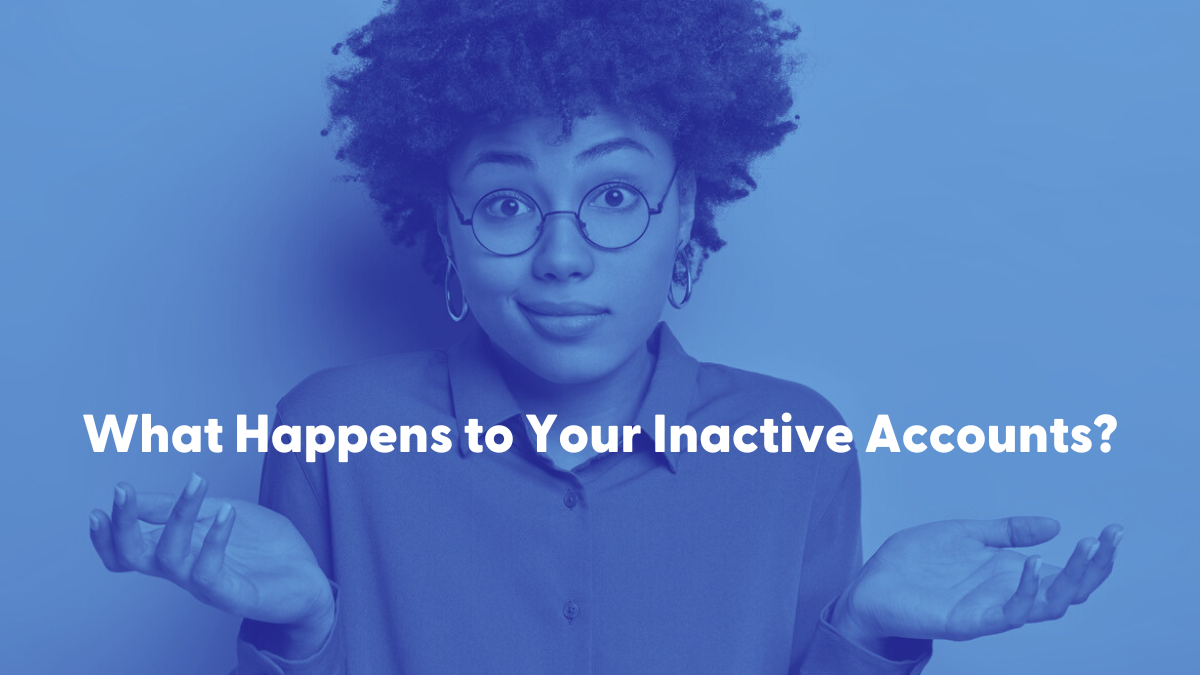May 30, 2023What Happens to Your Inactive Accounts?
With the ease of transferring money between accounts today, it’s becoming more common for people to have financial accounts at multiple institutions. For example, you may have your primary checking and savings accounts at one place, a separate savings account at another institution, and an account with an online company like PayPal®.
While the ability to transfer money between accounts is convenient, maintaining multiple accounts can become challenging – especially if you have several accounts. If you stop using an account for a while, what happens to it? Better yet, what happens to the money in there?
Types of Inactive Accounts
When you stop using an account for a prolonged period, your financial institution will likely flag your account as inactive. What happens next will vary slightly depending upon the financial institution and the state where your account is located.
Typically, inactive accounts go through two phases: Dormancy and Abandonment.
What is a Dormant Account?
If you have money in an account and fail to use it for a prolonged period, it may become “dormant.” While the time will vary by institution, accounts typically become dormant after 12 months of inactivity.
Once your account becomes inactive for the determined time, your financial institution will likely notify you that your account is now dormant. As a result, they may begin charging you a monthly fee to cover the cost of the account you are no longer using. For example, this fee may be anywhere from $5 to $10 per month.
If you don’t have money in the account, it may be closed by the financial institution. If you do have money in the account, they may continue to charge this fee monthly until you decide to reactivate the account or the balance reaches zero (and they close the account).
What is Abandoned Property?
If your account remains dormant for an extended period of time, usually between 3 to 5 years, it may be flagged as abandoned property. Depending on where your account is located, it can also be called “unclaimed property” or “escheatment.”
When this happens, the financial institution is required by law to turn the funds in the account over to the state. While the institution will usually try to notify you before this occurs, you may miss these important notices if your contact information on file is not up-to-date or accurate.
If your funds were turned over to the state as abandoned property, you might be able to still reclaim the money. You will need to contact your financial institution to confirm that this took place and research who manages unclaimed property in your state.
How to Reactivate Your Account
The good news is that keeping your account active or reactivating it is easy. Typically, all you need to do is make a deposit into your account or withdraw funds. Other actions could include opening a new account (such as a money market or certificate) or taking out a loan (such as a car loan or credit card).
If you want to prevent your account from becoming dormant, there are steps you can take, such as:
- Keep Track of Your Accounts: If you have multiple accounts at different financial institutions, keep records of each. You may even consider adding reminders to your calendar to use the account regularly to avoid inactivity fees.
- Close Old Accounts: If you have an account that you no longer plan to use, be sure to withdraw any remaining funds and officially close it with your financial institution.
- Update Account Information: Keep all your contact information current on your accounts. Since the financial institution will usually notify you before beginning to fee the account, you should have ample time to reactivate your account as long as the address on file is correct.
- Set Up Automatic Transfers: To avoid dormancy altogether, set up a monthly automatic transfer. Not only will this keep the account active, but it could help you build your savings. Even transfers as little as $10 per month could jumpstart your savings plan.
If you have an account at PEFCU that you haven’t used in a while, make sure you make a transaction often to keep it active. Transactions that will keep your accounts active include things like direct deposit, using your debit card for purchases, and making deposits or withdrawals.
We’re Here to Help!
With the ability to transfer funds quickly between accounts at different financial institutions, more people have multiple accounts today. This trend could lead to increases in dormant accounts and unclaimed property.
Keeping your accounts at the credit union active is easy – simply make a deposit or withdrawal monthly. If you have questions on dormant accounts or need to reactivate your account, we’re here to help.
Please stop by any of our convenient branch locations or call 800-226-6673 today.
Each individual’s financial situation is unique and readers are encouraged to contact PEFCU when seeking financial advice on the products and services discussed. This article is for educational purposes only; the authors assume no legal responsibility for the completeness or accuracy of the contents.


